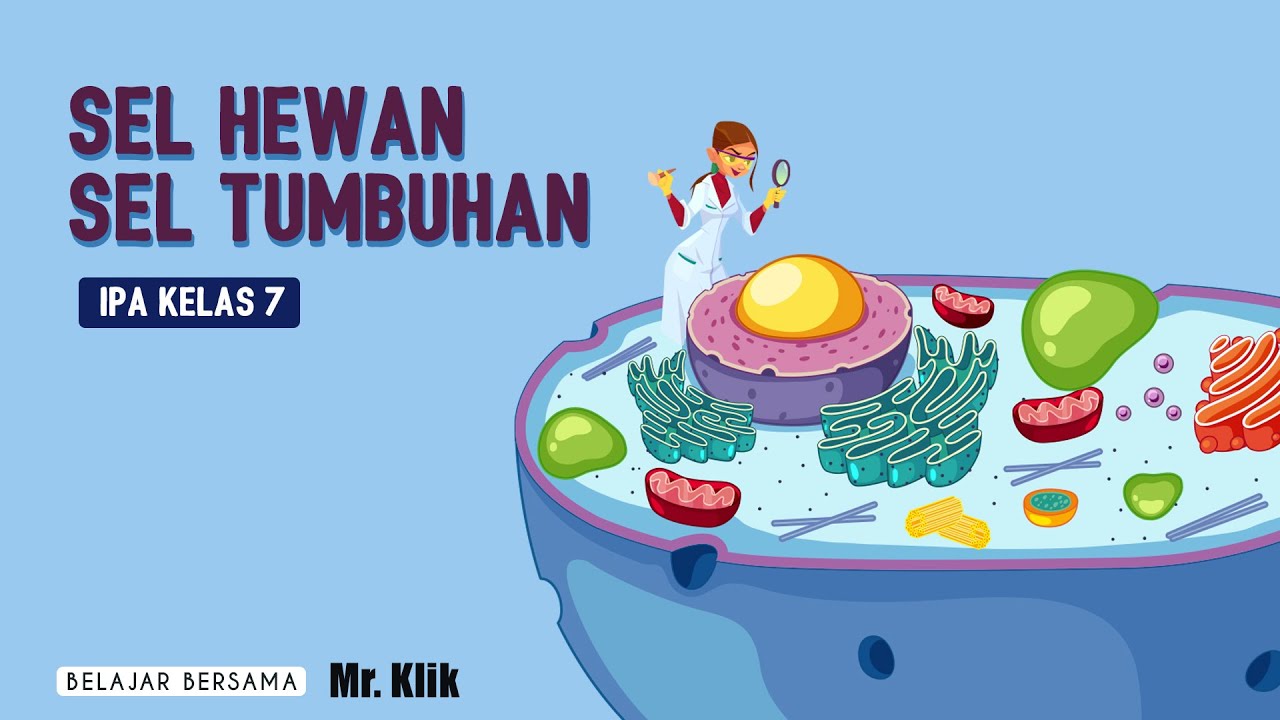Eukaryopolis - The City of Animal Cells: Crash Course Biology #4
Summary
TLDRThis script delves into the intricate world of animal cells, highlighting their eukaryotic nature with a nucleus governing cellular activities. It compares cells to a bustling city, complete with transportation via endoplasmic reticulum, protein processing in the Golgi apparatus, and waste management by lysosomes. The video also explores the cell's power plants, mitochondria, and their fascinating evolutionary history, ending with a discussion on mitochondrial DNA and its link to 'Mitochondrial Eve.'
Takeaways
- 🐾 Animals are composed of eukaryotic cells, which have a 'true kernel' or nucleus containing DNA and various organelles with specific functions.
- 🌿 Unlike animal cells, plant cells have a rigid cell wall made of cellulose, which provides structure but limits their mobility and complexity.
- 💃 The flexible cell membrane of animals allows for a variety of cell types, organs, and tissues, contributing to their adaptability and success.
- 🚀 The ability to move using specialized muscle tissue is unique to the kingdom Animalia.
- 🔬 Robert Hooke first discovered cells in 1665, but the complexity within eukaryotic cells was much more than he initially realized.
- 🏙️ A eukaryotic cell can be likened to a city with its own infrastructure, including a cell membrane that acts as border police, and cytoplasm that provides a 'wet and squishy' environment.
- 🛤️ The endoplasmic reticulum (ER) serves as the cell's highway system, with rough ER involved in protein synthesis and smooth ER in lipid creation and detoxification.
- 🧬 Ribosomes are the protein factories of the cell, assembling amino acids into polypeptides, which are then processed by the Golgi apparatus.
- 📦 The Golgi apparatus functions as the cell's post office, modifying, packaging, and dispatching proteins to their destinations.
- 🗑️ Lysosomes are the waste management and recycling centers of the cell, breaking down waste into reusable components.
- 🌟 The nucleus is the 'Beloved Leader' of the cell, containing DNA and controlling cell functions through protein synthesis.
- 🔋 Mitochondria are the power plants of the cell, converting nutrients into ATP, the energy currency, and retaining their own DNA, hinting at an ancient symbiotic relationship with early cells.
Q & A
What is the basic building block of animals?
-The basic building block of animals is the animal cell.
Why are animal cells called eukaryotic?
-Animal cells are called eukaryotic because they contain a 'true kernel' or nucleus, which in Greek means 'good nucleus', that houses the DNA and directs the cell's activities.
What is the main function of the cell membrane in animal cells?
-The main function of the cell membrane in animal cells is to enclose the cell and regulate what substances can enter or exit the cell, providing selective permeability.
How do plant cells differ structurally from animal cells?
-Plant cells differ from animal cells in that they have a rigid cell wall made of cellulose instead of a flexible cell membrane, and they contain organelles that allow them to produce their own food.
What is the significance of the flexible cell membrane in animal cells?
-The flexible cell membrane in animal cells allows for the creation of various cell types, organs, and tissues, and enables animals to move, find shelter, food, and mates, which has contributed to their evolutionary success.
What are cilia and flagella, and how do they function in cells?
-Cilia and flagella are hair-like or whip-like structures in some eukaryotic cells that aid in movement. Cilia are multiple small arms that wiggle, while flagella is a single long tail. They are made of microtubules and help in moving substances or the cell itself.
What is the role of the endoplasmic reticulum (ER) in a cell?
-The endoplasmic reticulum (ER) serves as a network of membranes that facilitate the transport of materials within the cell. It has two types: rough ER, which is involved in protein synthesis, and smooth ER, which is involved in lipid synthesis and detoxification.
What is the function of the Golgi apparatus in a cell?
-The Golgi apparatus functions as the 'post office' of the cell, processing and packaging proteins and other molecules before sending them to their destinations within or outside the cell.
What is the primary role of the nucleus in a eukaryotic cell?
-The nucleus serves as the control center of the cell, storing DNA and directing cellular activities such as growth, metabolism, and reproduction by regulating gene expression.
What are mitochondria, and why are they important in cells?
-Mitochondria are the 'power plants' of the cell, where respiration occurs, and energy from carbohydrates, fats, and other fuels is converted into ATP, which is the primary energy currency of the cell.
How do mitochondria relate to the concept of 'Mitochondrial Eve'?
-Mitochondria contain their own DNA, which is inherited solely from the mother and does not mix with paternal DNA. This allows scientists to trace human lineage back to a single female ancestor known as 'Mitochondrial Eve' who lived around 200,000 years ago in Africa.
Outlines

Этот раздел доступен только подписчикам платных тарифов. Пожалуйста, перейдите на платный тариф для доступа.
Перейти на платный тарифMindmap

Этот раздел доступен только подписчикам платных тарифов. Пожалуйста, перейдите на платный тариф для доступа.
Перейти на платный тарифKeywords

Этот раздел доступен только подписчикам платных тарифов. Пожалуйста, перейдите на платный тариф для доступа.
Перейти на платный тарифHighlights

Этот раздел доступен только подписчикам платных тарифов. Пожалуйста, перейдите на платный тариф для доступа.
Перейти на платный тарифTranscripts

Этот раздел доступен только подписчикам платных тарифов. Пожалуйста, перейдите на платный тариф для доступа.
Перейти на платный тарифПосмотреть больше похожих видео

SEL HEWAN DAN FUNGSINYA

Ribosomes (Protein Making Factory) Structure and Function of Ribosomes (Detailed Series)

Cell Structure Animation | Cell Structure and Function | Animal Cell and Plant Cell Differences

SISTEM ORGANISASI KEHIDUPAN | SEL HEWAN DAN SEL TUMBUHAN

Cell Theory and Organelles

GCSE Biology: Revision Guide | Plant, Animal, Bacteria Cells & Orders of Magnitude
5.0 / 5 (0 votes)
